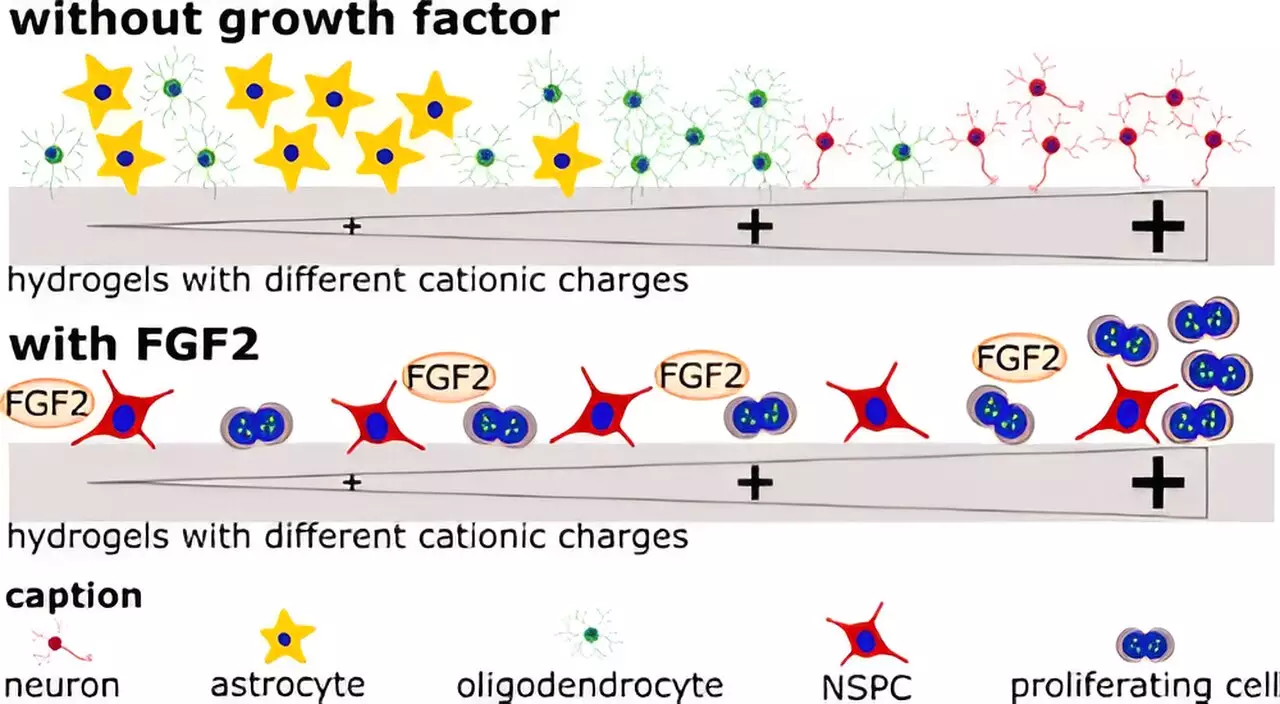In a groundbreaking study conducted by researchers from Bochum and Dortmund, an artificial cell environment has been developed with the potential to enhance nerve regeneration. Traditionally, injuries to the brain or spinal cord have posed significant challenges for healing due to the formation of fluid-filled cavities and scars that impede tissue regeneration. To address this issue, the team of scientists from Ruhr University Bochum and TU Dortmund University in Germany focused on filling these cavities with a substance that provides optimal conditions for the growth and differentiation of neural stem cells.
Dr. Kristin Glotzbach and Professor Andreas Faissner from the Department of Cell Morphology and Molecular Neurobiology in Bochum collaborated with Professor Ralf Weberskirch and Dr. Nils Stamm from the Faculty of Chemistry and Chemical Biology at TU Dortmund University. Their research, published in the journal ACS Biomaterials Science & Engineering, demonstrated that positively charged hydrogels can play a critical role in promoting the survival and growth of stem cells. The team focused on neural stem cells from mouse embryonic brains, which were cultured on these positively charged hydrogels.
One of the key findings of the study was the ability to manipulate the charge of the hydrogels to influence the fate of the stem cells. By adjusting the strength of the positive charge on the hydrogels, the researchers observed distinct outcomes. Stem cells that adhered to hydrogels with a high positive charge tended to differentiate into nerve cells, while those on gels with a lower positive charge developed into glial cells, which support the functions of nerve cells. This ability to control the differentiation of stem cells into specific cell types represents a significant advancement in the field of regenerative medicine.
In addition to manipulating the charge of the hydrogels, the researchers also explored the impact of adding the growth factor FGF2 to the artificial cell environment. While the presence of FGF2 increased the survival and division rate of the cells, it also slowed down the differentiation process. Moving forward, the team plans to incorporate peptides or components of extracellular matrix molecules into the hydrogels to further mimic the natural environment of the cells. Moreover, they aim to experiment with three-dimensional gels that could potentially fill cavities in the brain following injuries, opening up new possibilities for nerve regeneration.
Read More: The Challenges and Opportunities of Simulated Mars Missions
The implications of this research extend beyond basic understanding of nerve regeneration. The ability to manipulate the differentiation of stem cells into nerve or glial cells has significant implications for treating a variety of neurological disorders. In conditions such as multiple sclerosis, where both nerve cells and glial cells are affected, the findings from this study could pave the way for more targeted and effective treatments. By leveraging artificial cell environments to create tailored solutions for specific injuries or diseases, researchers are pushing the boundaries of regenerative medicine and opening up new avenues for therapeutic interventions.
The development of artificial cell environments that promote nerve regeneration represents a significant milestone in the field of regenerative medicine. By harnessing the power of positively charged hydrogels and growth factors, researchers are able to create tailored environments that support the survival, growth, and differentiation of neural stem cells. Moving forward, further exploration of these artificial cell environments and the integration of advanced techniques such as three-dimensional gels could revolutionize the treatment of neurological disorders and pave the way for enhanced nerve regeneration.


Leave a Reply